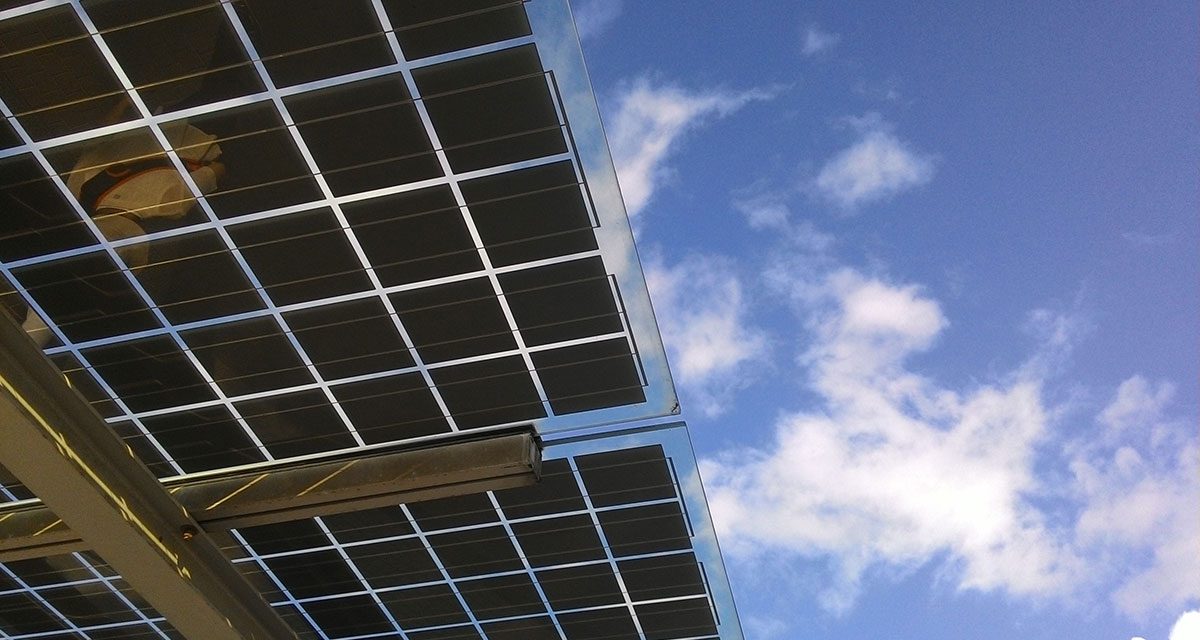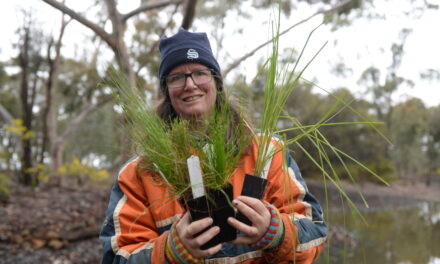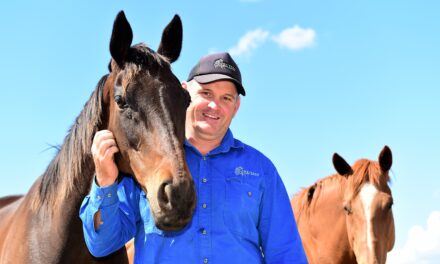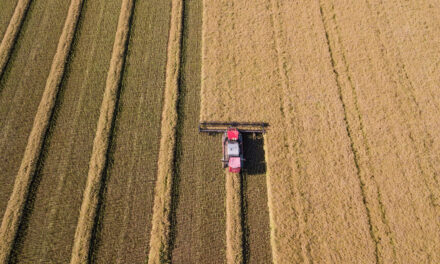A solar powered water pump is one of the most efficient ways that solar energy can be used on farm. This is because the power is used immediately and does not have to be stored in batteries.
With a solar powered water pump, an inverted is not needed to change the voltage to a higher level.
The two case-studies presented below show that solar water pumps can be used for both irrigation as well as stock watering.
Irrigation of a ‘crop’
For Nick Kemp’s 10 hectare farm not far from Braidwood, NSW, the solar water pump he has installed allows reliable and timely irrigation of the two hectares he has developed as a trufflery.
The property is an old cattle grazing paddock, well and truly grazed and compacted over the years. Three years ago Nick started ground preparation of two hectares to be developed as a trufflery.
The truffle fungus grows in relationship with various types of tree. So the two hectare area has been planted to replicate a forest with English and French Oaks as well as five varieties of Hazelnut trees.
‘A significant factor about farming truffles is that the yield at harvest time can vary dramatically year-to-year,’ states Nick. ‘The variation depends mostly on the moisture levels in the soil at certain months of the growth cycle. It can make the difference between a great harvest and a very poor harvest.
‘So, although my farm is in a good overall annual rainfall area, it is still critical that the soil moisture is right in particular months. For this reason, I regard an irrigation plan essential to the farm plan,’ he says.
The irrigation needed is in the top 200 millimetres of the soil profile and, in this zone, the aim is to water the truffles themselves, not the trees of the forest. Across the summer period is the critical time. Actual water availability is not a problem because there are ten water springs on the farm where the water just bubbles slowly out of the ground all year round.
Nick uses the solar powered pump to push the through poly pipes to a header tank on a hill side about 20 metres in elevation above the springs. From there it is reticulated to the trufflery by gravity when needed. A system of moisture probes in the soil identifies when irrigation is needed.
The benefit of the solar pump is that it comes on automatically when the sun shines and keeps pumping when the sunshine continues. In a single day, the pump will deliver enough water to the header tank to irrigate for weeks.
Importantly, because Nick has a corporate position in Canberra, the pump will operate when he is absent. The position he holds requires interstate and international travel and it is a huge benefit of the solar system that it will operate when he is away.
Of really critical importance is the fact that, with all this automatic operation, the pump is designed in such a way that it will not seize if the water source runs dry. The mechanical parts of the pump will just keep going without creating any damage.
The solar water pump guarantees the truffles will have plenty of water when they need it and does so in a way that enables Nick meet his off-farm work commitments.
Stock watering purposes
The sequence of events that led to Kevin Smith’s decision to install a solar water pump was quite different to that of Nick Kemp’s. The reason why Kevin needed a water pump was also different – he needed it to supply drinking water to his herd of cattle and his flock of sheep.
Kevin’s property is at Orangeville, around 80 kilometres north west from Wollongong, NSW, and in the steep country on the eastern side of the coastal escarpment. The farm is a 120 hectare property on which he produces fat lambs and local trade vealers from self-replacing mobs of sheep and cattle.
The annual rainfall is around 600 millimetres and this provides Kevin with an intermittent creek as well as filling dams. The water, however, has to be transported from the creek and dams to the troughs where the livestock will drink it.
‘For many years we had an old air-cooled slow revving diesel motor driving a piston pump,’ he says. ‘This was a great old pump and it would pump away for hours on end on three or four litres of diesel a day. It supplied water to a header tank and we reticulated it to the troughs from there.
‘Being powered by diesel this pump required regular checking and refueling from time to time. It also needed to be turned on or turned off by going to the pump yourself and starting or stopping it.
‘We had to keep an eye on the pump’s water supply because the piston would seize if the water source ran dry. So the pump was reasonably time consuming,’ he says.
The next Kevin step took was about ten years ago when he decided to install a twin impeller fire-fighting pump to move the water to the header tank. This was a high revving and high pressure pump which could pump a lot of water in a short time but, in the long term he had various issues with it.
The third stage was when he saw the solar water pump system at the Henty Field Days a few years ago. It seemed to tick all the boxes and, after asking more questions and doing more research, he bought a system which has now been running for two years.
‘The beauty of the system is that it just goes and goes,’ says Kevin. ‘It comes on in the morning at about 8:00 am and shuts off in the afternoon at about 5:00 pm. And it runs silently.
At the moment, Kevin has a single, horizontally mounted, solar panel which drives the pump but the system has the flexibility to add another panel which will increase the flow rate. By arranging this new panel in a different configuration from the horizontal array, the two panels will allow the pump to start operating earlier in the morning and keep going later in the afternoon.
The pump currently pushes water through a 50 millimetre rural poly pipe to a header tank about 50 metres in elevation above the water source.
‘From there we reticulate the water to ten water troughs in the grazing paddocks,’ he says. ‘We will soon increase this number of troughs to fifteen and begin a more detailed system of rotation grazing. Our system of reticulation allows us to close off water troughs not in use in the rotation grazing plan and open troughs in the paddocks where the sheep and cattle are currently grazing.
‘The volume of water moved by the pump to the header tank is sufficient to supply water to our livestock numbers of around 60 cattle and 150 sheep,’ he says.
* Thanks to Brenton Diener of Solar Water Pumps at Kapunda, SA.
www.solarwaterpumps.com.au 08 8566 3876 Ph: Mob 0438 640 362.
* Thanks also to Nick Kemp, truffle farmer of Braidwood, NSW, and whose business is Nova Systems at Fyshwick, ACT. Thanks to and Kevin Smith, beef and lamb producer at Orangeville, NSW.








